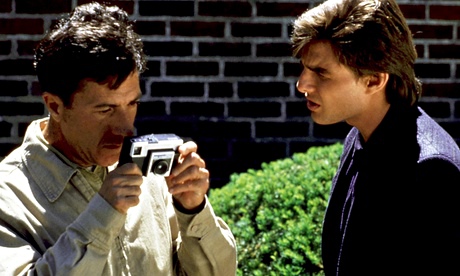
It’s a fun parlour game to diagnose figures from the past with illnesses recognised by modern science. Did the biblical Goliath have the growth disorder acromegaly? Was Henry VIII a psychopath? Was the great physicist Paul Dirac autistic? The truth is we can’t know. And if diagnosis at a distance is irresponsible when practised on modern celebrities, it is, arguably, hardly more respectable when the distance is the yet more unbridgeable one of time.
The reader of Steve Silberman’s brilliant and sparklingly humane book, the winner of this year’s Samuel Johnson prize for non-fiction, might well be alarmed early on when, after an introduction on the modern politics of autism, he settles into a long biographical portrait of the 18th-century scientist Henry Cavendish, whom his contemporaries thought very odd and shy. And then a similar sketch of Dirac in the 20th century: he didn’t talk much either. Might they have been autistic? The author wants us to think so, but it’s impossible to tell. Only later does he reveal his motivation in including these sketches: to comfort those diagnosed in the present with the knowledge that similar characteristics have been present in great figures of the past.
In this he draws on the work of Hans Asperger, a Viennese physician who, in the 1920s and 30s, saw more than 200 children (as well as adults) who, as Silberman explains, “displayed a similarly striking cluster of social awkwardness, precocious abilities, and fascination with rules, laws and schedules.” This syndrome, Asperger reckoned, was on a continuum and “not at all rare”.
The trouble with the history of autism in medicine, as Silberman’s book goes on to demonstrate, is that Asperger’s work was forgotten for half a century or more. Instead the ruling definition of autism for that period was the alternative picture offered by another reseacher, Leo Kanner, who was born in Ukraine and practised in the US. Kanner, set up as the villain of this book, identified as “autism” strictly something that he observed in particularly “low-functioning” children. He defined it as an infantile form of “psychosis”, the sufferers of which would have no hope of becoming independent members of society. (At one point he suggested that it was caused by bad parenting.) Kanner referred to Asperger’s work precisely once in a lifetime of publications, and his own definition held sway for most of the 20th century.
It was the rediscovery of Asperger’s vision of a continuum that shades imperceptibly into “normal” eccentricity – the idea, as we say now, that an individual can be somewhere “on the spectrum” – which, as Silberman shows, led to the strong rise in autism diagnoses in the 1990s and 2000s. That is sufficient to give the lie to the socially noxious idea that modern vaccines were at fault, though Silberman gives a sympathetic picture of worried parents who latched on to ideas that their children had been harmed by MMR, or could be cured by vitamins or quack therapies. In its meandering but always colourful manner, the book weaves in to its medical history and host of modern case studies some more discursive sequences. For example, people on the spectrum eagerly adopted new technologies such as amateur radio and the internet, which enabled them to communicate in ways other than face to face. Silberman heartwarmingly shows how the film Rain Man enabled many people to see themselves in Dustin Hoffman’s performance and realise that they were not alone.
He also reminds us, rightly, that the language of illness is inescapably political. Many today reject the well-meaning formulation “people with autism” on the grounds that it implies autism is a separate burden that they have to carry, rather than simply a different way of being. So they describe themselves straightforwardly as “autistic people”. You might think that the persistence of the term “disorder” in the current clinical terminology doesn’t help – but then, as is clear from Silberman’s case studies, the issue of diagnosis itself is political: it is only by being identified as having a “disorder” described in the diagnostic manuals that one can access the educational and other services that some autistic people require to flourish.
Some have suggested using the label “neurotypical” to describe the non-autistic population, with one autistic wag explaining: “Neurotypical syndrome is a neurobiological disorder characterised by preoccupation with social concerns, delusions of superiority, and obsession with conformity. There is no known cure.” But the proper thing now is to celebrate “neurodiversity”, since, as Silberman points out, autistic people are just as different from one another, or more so, than they are from the non-autistic. He might justifiably have added that the “neurotypical” are hardly a homogeneous bunch either, and that there are very many other ways to be atypical. (Neurological typicality, actually, must be a theoretical construct that makes sense only on the grossest scales.) In a more forgivable than usual application of our age’s ruling psychological metaphor, Silberman suggests that we think in terms of a range of “human operating systems”. Just because a computer doesn’t run Windows OS doesn’t mean it’s dysfunctional. We ought to let a thousand code architectures bloom, as they no doubt always have done, in the software of the human mind.
• To order NeuroTribes for £12.60 (RRP £16.99) go to bookshop.theguardian.com or call 0330 333 6846. Free UK p&p over £10, online orders only. Phone orders min p&p of £1.99.

